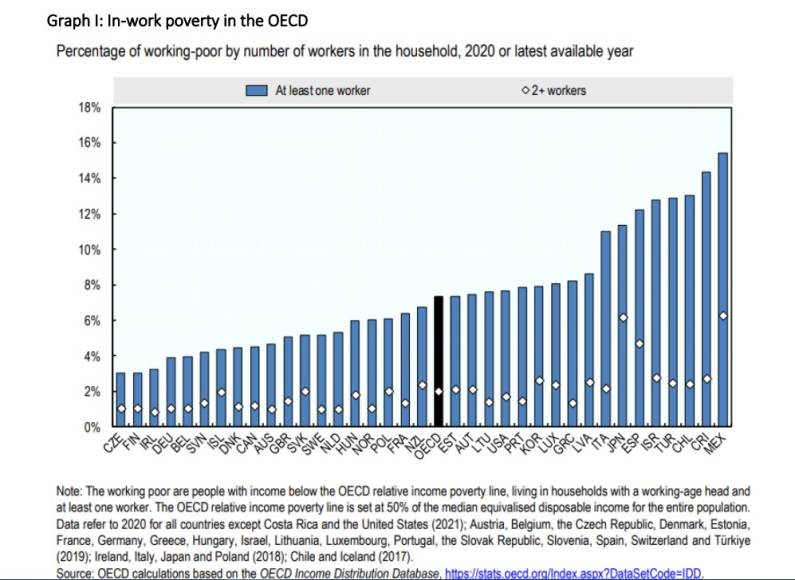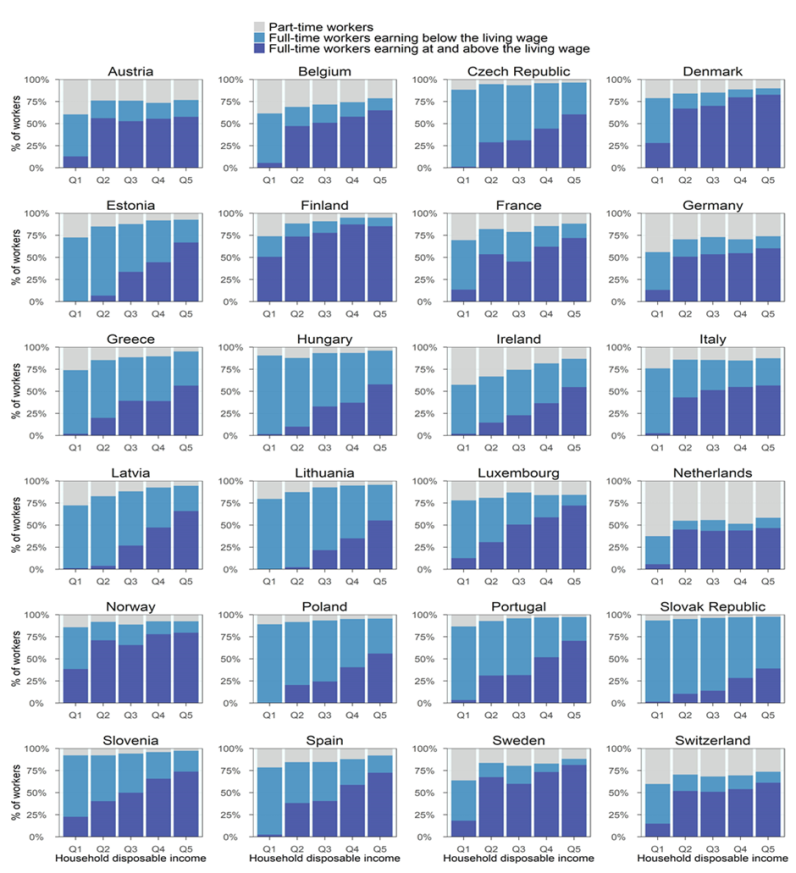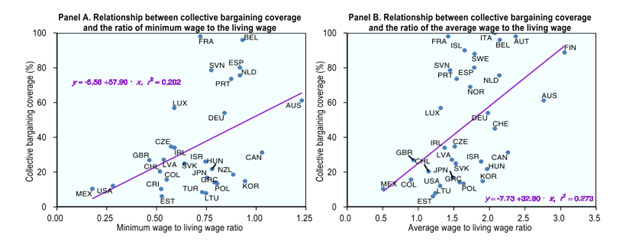To advance living wages, strengthen collective bargaining
25 April 2023
The working paper from OECD’s Well-being, Inclusion, Sustainability and Equal Opportunity Centre (WISE) that was released on 24 April 2023 compares the different methodologies that are being used to calculate a living wage, in other words a wage that allows workers to reach a basic decent standard of living and participate in social and cultural life.
This research is clearly inspired by the current trend of some multinational enterprises looking to adopt more responsible business conduct by voluntarily committing to a living wage for their own workers , in some cases also for the broader set of workers in their supply chains. In this quest, it is logical for questions to be raised about the correct method and the appropriate data that should be used.
While the focus of the OECD working paper is on technical issues such as different ways to calculate living wages, the impact that certain assumptions have on living wage estimates and an exercise to “benchmark” existing methodologies , it also contains data and conclusions pointing to the key importance of trade unions and collective bargaining when it comes to achieving living wages.
Working poor : A labour market failure not to be underestimated
The OECD working paper starts by recognising that having a job is often not enough to avoid poverty. Across the OECD, of all working age individuals in a household with at least one person in employment, an average of 8% are poor and living in a family with a disposable income below 50% of median household income. The share of working poor is higher than average in economies such as the US and Korea, exceeding 10% in Italy, Japan, Israel (among other), reaching a maximum of around 15% in Mexico (see graph 1).
Moreover, the working poor take up a majority or around 68% of all poor at working age.

Wages are crucial to address in-work poverty
A question that is often raised in policy discussions on in-work poverty is to what extent raising wages at the bottom reaches those workers who are living in poor households. Workers on low pay do not necessarily live in low-income households. Hence, increasing pay of low wage workers may end up disproportionally benefitting households much higher up in the income distribution.
The OECD’s working paper acknowledges that low wage workers can indeed be found living in households around the middle of the income distribution. Crucially, it also acknowledges that almost all full-time workers from households at the bottom quintile of the income distribution are paid a wage that is below the living wage as estimated by the Fair Wage Network. In Eastern and Southern European countries (among other Poland, the Czech Republic, Portugal, Spain, Greece), full-time workers earning less than the living wage even make up three quarters of all workers living in the bottom quintile of the household income distribution. This confirms that paying living wages, along with other measures such as providing more stable employment contracts instead of precarious forms of work, will have tangible effects on the living standards of households at the bottom of the income distribution.

Graph II: Household income level of workers by work and pay status
Stronger collective bargaining lifts wages above living wage thresholds
Finally, section five of the OECD working paper explores the impact of collective bargaining.
Using estimates from the Fair Work network, the OECD calculates to what extent the average wage in a country covers what a single earner family with average fertility rates needs as a living wage. This ratio with data from 2020 is used on the horizontal axis of panel B below. It shows that average wages can be two to three times’ higher than the estimated living wage (Finland, Australia, Korea, Belgium, Austria) whereas average wages in the US and the UK are quite close to living wages and in Columbia and Mexico even lower.
Plotting this ratio against the share of employees covered by collective bargaining agreements, as is done in panel B , reveals a positive association between collective bargaining and the extent to which average wages exceed living wages. In countries with a higher proportion of workers covered by collective bargaining, average wages are further above what is estimated to be a living wage compared to countries where collective bargaining coverage is lower.

Graph III : Collective bargaining, minimum wages and living wages
Besides pushing up the average wage, higher bargaining coverage also reduces the gap between the level of statutory minimum wages and living wages. Panel A shows high coverage rates in countries such as Belgium, Spain, Netherlands, and France coinciding with minimum wage levels that are closer to what is calculated as constituting a living wage. High(er) bargaining coverage testifies to the existence of well – established collective bargaining institutions (such as sectoral extension of collective agreements, tri-partite social dialogue councils) and robust trade union organisations able to influence minimum wage policy. On the other hand, New Zealand and Korea show the case of a strong minimum wage setting compensating for weaker collective bargaining institutions.
Conclusion
The background of this OECD working paper is a proliferation of living wage initiatives driven by civil society initiatives and businesses with the latter engaging in voluntary commitments to pay a living wage.
At the same time, the paper sheds light on the key role that social dialogue and collective bargaining play in delivering effective wage policy and practices that close and exceed the gap with living wages, and this not only at company level but throughout the wider economy. The OECD working paper (page 37) underlines in particular that ”Taken together, this evidence points the need to ensure the effective involvement of social partners in statutory minimum wage setting and updating and to strengthen the bargaining position of workers”. TUAC expects the OECD to make sure that this conclusion is followed up in practice by recommendations to promote collective bargaining.
